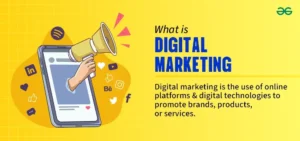If you’ve ever signed up for a newsletter or received a promo code in your inbox, you’ve already experienced email marketing in action. It’s one of the most effective digital marketing strategies out there—but what exactly is it, how does it work, and how can you use it to grow your business or brand? Let’s break it all down.
1. Introduction to Email Marketing
Email marketing is a way businesses and individuals connect with their audience through—you guessed it—emails. Whether it’s a startup sending product updates, a blogger sharing new content, or a large brand launching a seasonal sale, email marketing helps keep the communication direct and personal.
What makes it so powerful is that it lands straight in someone’s inbox. Unlike social media where algorithms can limit reach, an email is a one-on-one conversation. It allows businesses to build relationships, nurture leads, and ultimately drive sales or engagement—without relying on third-party platforms.
2. How Email Marketing Works
Think of email marketing as a cycle:
- Build a list – This starts by collecting email addresses (ethically!) from people who are genuinely interested in your content or product.
- Segment your audience – Not every subscriber is the same. Some are new, some are loyal, and others might just be curious. You can tailor emails based on their behavior or preferences.
- Create compelling content – This includes writing eye-catching subject lines, valuable body content, and calls-to-action (CTAs) that guide the reader toward your goal—like clicking a link, buying something, or signing up.
- Automate & send – Using tools, you can schedule emails, set up automatic welcome messages, or trigger specific emails based on user actions.
- Track performance – Open rates, click-throughs, unsubscribes, and conversions help you understand what’s working and what’s not.
So in a nutshell: collect → communicate → convert.
3. Types of Email Marketing Campaigns
Email marketing isn’t just about promotions. There are several types of campaigns, each serving a different purpose:
- Welcome Emails – Sent when someone signs up. It’s your chance to make a great first impression.
- Newsletter Emails – Regular updates that might include blog posts, news, tips, or curated content.
- Promotional Emails – Announcements about sales, special offers, or new products.
- Transactional Emails – Order confirmations, receipts, shipping updates—these are automated and triggered by a user’s action.
- Re-engagement Emails – Target inactive subscribers to bring them back into the fold.
- Drip Campaigns – A series of pre-written emails sent over time to guide users through a journey, like onboarding or a sales funnel.
Knowing when and why to send each type is key to keeping your audience engaged without overwhelming them.
4. Benefits of Email Marketing
Why should you invest time or money in email marketing? Here are some clear benefits:
- Direct access to your audience – You’re not competing with algorithms—your message goes straight to the inbox.
- High ROI – Email marketing delivers one of the highest returns on investment in digital marketing. For every $1 spent, the average ROI is around $36–$40.
- Scalable – Whether you’re sending to 10 or 10,000 people, it’s easy to scale up or down.
- Personalized communication – You can tailor your message based on user behavior, interests, or purchase history.
- Data-driven insights – Track open rates, clicks, and conversions to continuously improve.
- Automated but personal – Once set up, automation keeps the communication going with minimal effort, yet it still feels one-on-one to the recipient.
5. Key Components of a Successful Email Campaign
What separates a great campaign from one that ends up in the spam folder? A few critical ingredients:
- A strong subject line – This is the first impression and often determines if your email gets opened.
- Personalization – Use the recipient’s name, segment your list, and send relevant content.
- Compelling copy – Get to the point, speak their language, and focus on benefits, not features.
- Clear CTA (Call to Action) – Make it obvious what the reader should do next—click, buy, read, register, etc.
- Mobile optimization – Most people check email on their phones. Make sure it looks good on small screens.
- Testing and analytics – A/B test subject lines, content, and send times. Use the data to tweak and improve.
6. Email Marketing Tools & Platforms
To do email marketing well, you need the right tools. Here are some popular platforms that can help you get started:
- Mailchimp – Great for beginners with a drag-and-drop builder and solid analytics.
- ConvertKit – Ideal for creators, bloggers, and solopreneurs with easy automation features.
- HubSpot – A robust CRM and email tool for businesses looking for more advanced workflows.
- ActiveCampaign – Excellent automation and segmentation tools for growing teams.
- Sendinblue – Combines email and SMS marketing, with a free plan that’s great for small businesses.
- Klaviyo – A top choice for eCommerce brands, especially those on Shopify.
These platforms help you design emails, manage lists, automate messages, and track results—all in one place.
Final Thoughts
Email marketing isn’t dead—it’s just evolving. In fact, it’s more powerful than ever when done right. Whether you’re a small business owner, a content creator, or part of a large marketing team, email can be your most reliable and cost-effective way to reach people, build trust, and grow your brand.
So go ahead—start building that list and crafting your first campaign. You might be surprised just how far a good email can take you.


